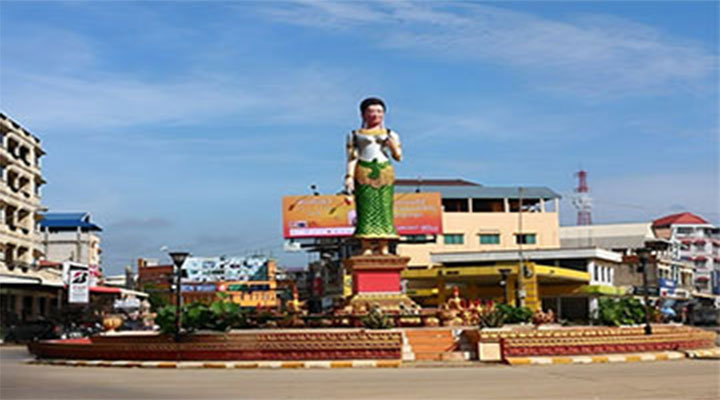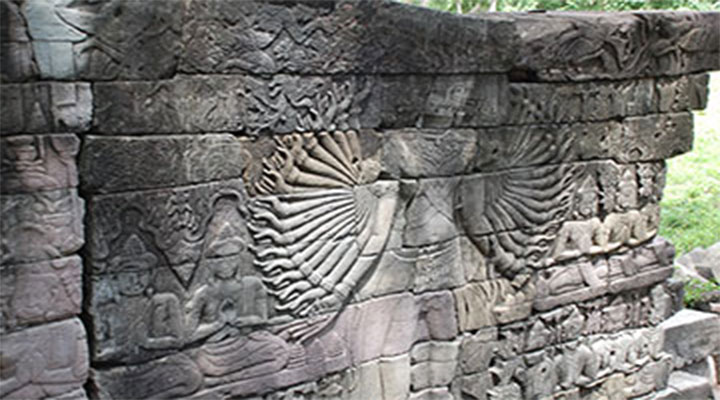" Quality Banteay Meanchey Province professional, friendly service are our priorities "
Banteay Meanchey Province
.

Banteay Meanchey Province is located in the northwest of Cambodia, bordering Thailand to the west. It’s known for its rich history, diverse culture, and picturesque landscapes, making it a hidden gem for travelers who want to explore Cambodia beyond the typical tourist spots. Here’s a comprehensive description of the province:
Geography & Location
Banteay Meanchey is situated in the northwestern part of Cambodia, sharing a border with Thailand. The province is relatively close to Siem Reap (home of the Angkor Archaeological Park), making it an interesting addition for travelers looking to explore more of Cambodia. The area is characterized by flat plains and a tropical climate, with rice fields, small villages, and forested areas.
Cultural Heritage & History
Banteay Meanchey has a fascinating history, rooted in the ancient Khmer Empire. The province’s name, "Banteay Meanchey," translates to "Fortress of the Victory," which reflects its historical significance as a borderland region.
Historically, the area was part of the Khmer Kingdom and played an important role in trade, culture, and defense during the Angkor period. The province also has remnants of ancient temples and structures that reflect its deep cultural and religious ties to Hinduism and Buddhism, as well as the influence of the Khmer Empire.
Notable Attractions
1.Ak Yum Temple: An ancient temple from the Angkor period, it is less crowded and offers a glimpse into Cambodia’s early religious history. Its location near Tonle Sap Lake makes it even more intriguing for visitors.
2.Banteay Meanchey Temple: This historical temple in Sisophon (the provincial capital) dates back to the 13th and 14th centuries. It features beautiful Khmer architecture and is an important cultural site in the province.
3.Sisophon City: The capital city of Banteay Meanchey is a bustling town that showcases Khmer traditions and local life. It is home to markets, traditional foods, and vibrant street life, making it a great place for cultural immersion.
4.Ampeou Waterfall: A beautiful natural landmark, Ampeou Waterfall is located in a peaceful and lush forest area. It’s an ideal spot for eco-tourism, offering opportunities for swimming, picnicking, and enjoying nature.
5.Banteay Meanchey Library: A hub for learning and cultural exchange, the library provides resources for locals and visitors alike to explore the province’s history, culture, and language.
Economy and Agriculture
Banteay Meanchey is primarily an agricultural province, with rice farming being a key industry. The fertile soil and abundant water from nearby rivers and lakes provide ideal conditions for rice cultivation. In addition to rice, the province is known for its production of cassava, maize, and other crops.
Local markets in towns like Sisophon are bustling with fresh produce, goods, and local crafts. As the province develops its tourism infrastructure, there are growing opportunities for small businesses to thrive in the hospitality and service sectors.
Local Culture
Banteay Meanchey is rich in local traditions, with people maintaining a strong connection to their farming roots, as well as to Cambodian music, dance, and arts. Visitors will find the province’s hospitality welcoming, and many rural communities continue to practice traditional Khmer crafts such as weaving, pottery-making, and carving.
Local festivals and religious ceremonies are celebrated throughout the year, including Khmer New Year and other important Buddhist holidays, offering visitors a chance to experience authentic Cambodian cultural practices.
Getting There
Banteay Meanchey is accessible by road from Siem Reap (about a 2-3 hour drive) and Phnom Penh (around 7-8 hours by car). The province also has border crossings to Thailand, making it a popular route for travelers heading to or from Thailand. The main town, Sisophon, serves as the gateway to the province.
 ________________________________
________________________________Banteay Meanchey is an evolving destination for eco-tourism, cultural tourism, and history enthusiasts. While it may not yet be as famous as other regions like Siem Reap, its hidden charm lies in its authentic experiences, historical significance, and the beauty of its natural landscape. Visiting this province offers a chance to immerse yourself in Cambodian culture and explore a region that is growing rapidly while maintaining its deep-rooted traditions.
.